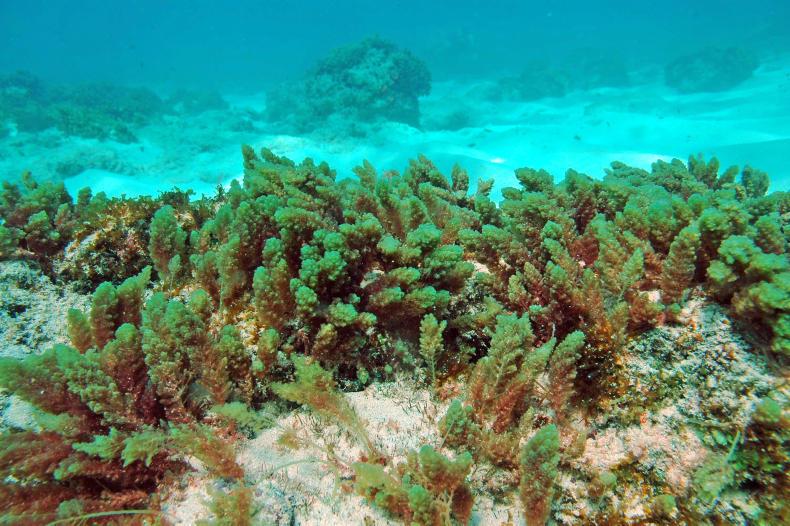Rob Kinley, a scientist at Australia’s Commonwealth Scientific and Industrial Research Organisation and James Cook University, is conducting the first trial of seaweed feed in live cattle to reduce methane emissions.
He is originally from Canada, where the technology was first investigated after livestock accidentally grazed seaweed blown into their field by a storm.
Kinley and other researchers have established that the tropical seaweed Asparagopsis taxiformis cuts emissions of the notorious greenhouse gas from cattle rumen fully in lab experiments, and by up to 80% in live sheep.
“My concern now is formulating the feed,” Kinley told the Irish Farmers Journal.
“We want it to be in the feed mix without the animals knowing it’s there.”
This involves reducing salt levels to increase palatability.
Kinley is currently giving beef cattle 2% seaweed in a feedlot-style diet. His research is partly funded by Meat and Livestock Australia. The results could help the industry meet its climate change obligations.
High cost
At this experimental stage, Kinley acknowledges the high cost of sourcing the seaweed.
“We have scuba divers and workers on a barge spreading and freezing it. There is no commercial source for it.”
Kinley needs more supply if he is to move on to the next phase of his research – trials in dairy cattle. “It takes three times as much,” he said. “Give us another year.”
Another challenge would be to deliver the seaweed to cattle when they are at grass.
“If they’re out in the paddock, it won’t be easy to see how much they eat or if they eat at all,” Kinley said, adding that attempts with lick buckets had proved unsuccessful.
Teagasc’s lead researcher on gas emissions, Gary Lanigan, said Kinley’s research “looks promising”.
“The bromine in the algae mixes with carbon and hydrogen in the rumen to create bromoform. This acts as an enzyme inhibitor. We’ve known for some time that chloroform inhibits methane and bromofrom is very similar,” he explained.
Lanigan, too, raised the seaweed supply issue.
“The Australians figured that for the 29m ruminants they have, you’d need 5,000ha of the stuff,” he told the Irish Farmers Journal.
As for delivery to livestock, he added: “You could introduce this into grazing systems, during milking or introduce it into feed troughs.”






 This is a subscriber-only article
This is a subscriber-only article









SHARING OPTIONS: